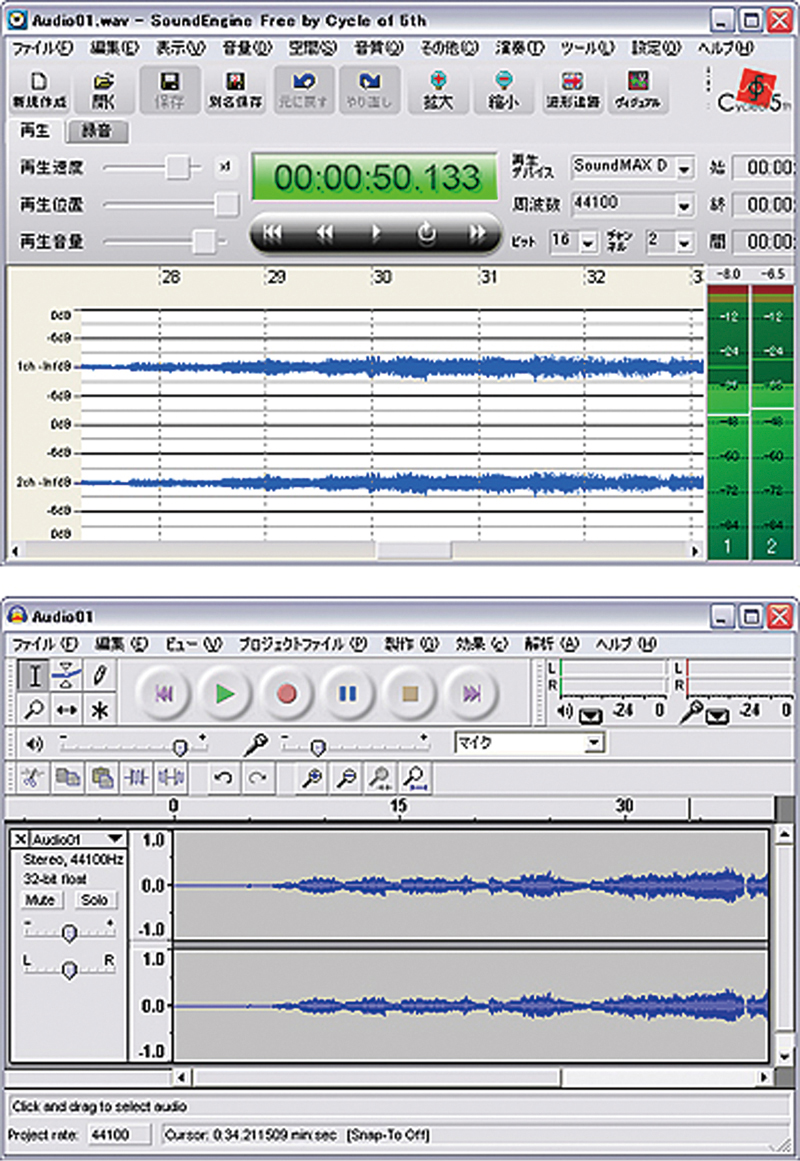WAVE
WAVE
WAVE
CATEGORIES
When converting analog sound into digital data, it needs to go through a sampling and quantizing analog – digital (A-D) conversion process. The digitization of sound in this way is known as PCM (Pulse Code Modulation).
WAVE is one of the principal file formats for PCM sound data. The files carry the .wav extension.
This is an uncompressed file format used when recording or editing sound by computer.
If there is a sufficient sampling rate and quantization bit rate, the sound can be digitized with a level of quality that cannot be distinguished from the original. It can also be used to edit and record music on a CD to create a music CD (CD-DA).
High quality, uncompressed data is relatively heavy in size. For example, a wave file on a music CD with a sampling rate of 44,100Hz and 16-bit quantization would comprise around 86KB per second (44,100 x 16 bits). That would be double for stereo, around 172KB per second and 605MB per hour. (More than an hour of audio data can be recorded on a 650MB CD but the recording time with a music CD is somewhat longer using this method.) In contrast to this, the principal audio compression data format, MP3, takes up about 1/10th of that volume. It is feasible to say that the popularity of portable MP3 players, etc. was brought about by the evolution of compression technology.
Digital images (bit map data) can be edited with uncompressed file formats and can be converted into a compression data format if the size of the data needs to be reduced for use. Likewise, audio can be edited in WAVE because it is an uncompressed file format. The use of uncompressed file formats should be considered where necessary.
One of the criteria for selecting digital recording devices (such as voice recorders and linear PCM recorders) is the ability to record in WAVE format (or only in MP3 format), and the sampling rate and quantization bit rate for recording.
 Here are two examples of audio editing software: SoundEngine (top) and Audacity (bottom). The uncompressed WAVE format is the most common format for recording and editing.
Here are two examples of audio editing software: SoundEngine (top) and Audacity (bottom). The uncompressed WAVE format is the most common format for recording and editing.
